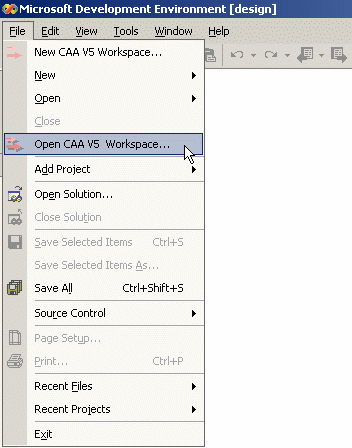
RADE |
C++ Interactive Dashboard |
Customizing Microsoft Visual Studio .NetHow to access CAA V5 tools from Microsoft Visual Studio .Net |
| Technical Article | ||
AbstractThis article is intended for people usually developing with Visual Studio .Net. They can find here the way to use CAA V5 tools without leaving their favorite environment. Supported version of Visual Studio .Net are:
The first part of the article explains how to set-up Visual Studio .Net to add new menus and commands and the second part points out the commands to apply on any CAA V5 File Tree in order to be able to work on their files from within the Microsoft environment. In the rest of this article, labels of buttons or menus from Visual
Studio .Net are written using " |
After installing the product on a workstation, the customization of Visual Studio .Net is enabled by default at startup. 2 CAA menu items in the File Menu: New CAA V5 Workspace... and Open CAA V5 Workspace...

Other CAA menu items are displayed only after opening or creating a CAA V5 Workspace:
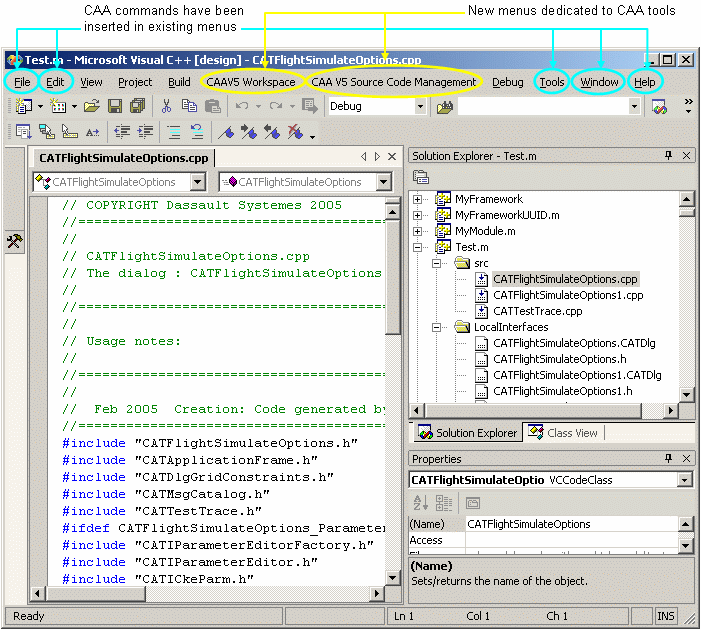
By default, all add-ins installed on the machine are activated. You can
choose to deactivate some of them using
Tools/Add-in Manager...
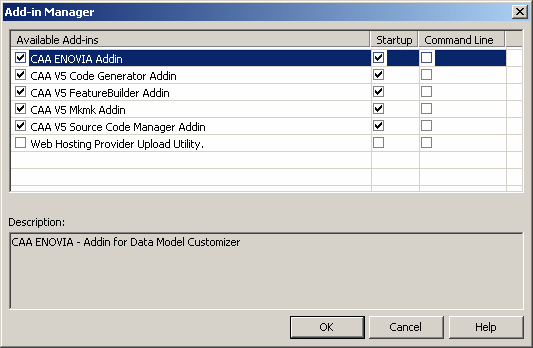
You can deactivate add-ins during you current session (1rst column), or deactivate for next startup (2nd column).
|
|
When first opening Visual Studio .NET,
the dialog box opposite is displayed. It is strongly recommended to create
the new keyboard mapping scheme. To do so, proceed as follows:
|
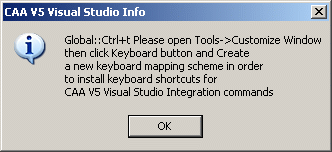 |
|
|
In this version, "CATIA Design Studio Add-in" is not yet available on Visual Studio .Net, and the CodeGenerator does not include the DialogBuilder. This functionalities for the moment are only available on Developer Studio. | |
[Top]
The integration principle we have chosen is that Visual Studio .Net uses the concepts of solutions and projects:
[Top]
|
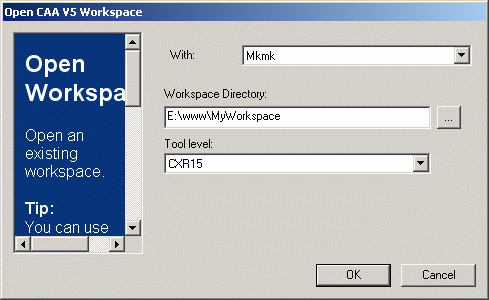 |
|
 |
Refresh whole Solution from Filetree/Refresh
Active Project from Filetree in
the Project menu).
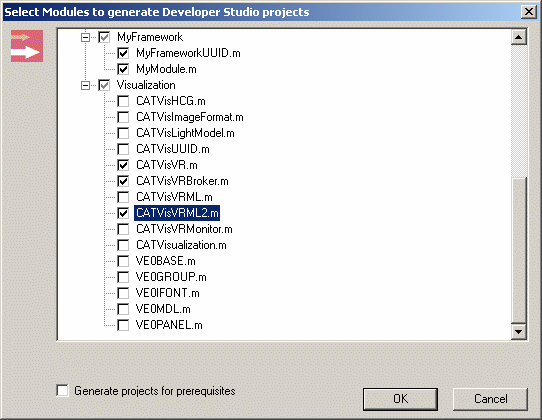
Click OK to
generate projects for the selected frameworks and modules. A log window is
displayed while generating project information and once finished Visual
Studio .Net displays this information. Here is the corresponding
generated projects displayed in the Solution Explorer or in the
Class View.
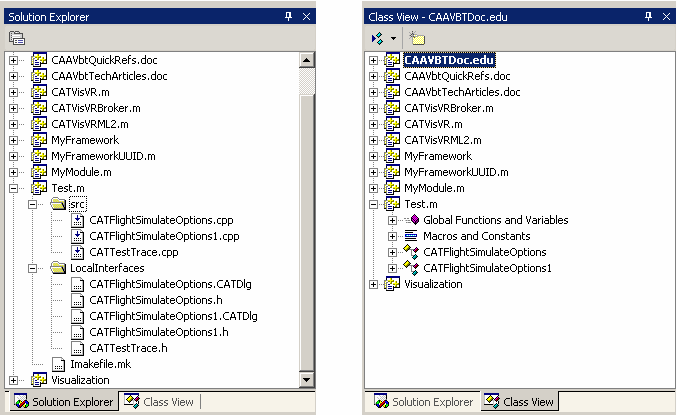
For several commands of the RADE interactive dashboard, you
will need to set a current active Project. For example, when you create a new
class with RADE, you need to set the corresponding module where you can to
create the class, as the current active project. To do this, select the module
project in the Solution Explorer or in the Class View and
activate the contextual menu with the right mouse button, then select the item
Set as StartUp Project. Note that you
can also select Set as StartUp Project
in the Project menu.
[Top]
Now you are ready to work using both the Visual Studio .Net environment and CAA V5 tools. The next article we advise you to read is Working with Visual Studio .Net [1] where you will find explanations about how to use others commands. If you are familiar with mkmk commands or Workspace Manager commands, you will find the corresponding Visual Studio .Net menus and commands in Workbench Commands Mapping [2].
[Top]
| [1] | Working with the RADE C++ interactive DashBoard |
| [2] | Workbench Commands Mapping |
| [Top] | |
| Version: 2 [February 2005] | Document updated |
| Version: 1 [Jan 2000] | Document created |
| [Top] | |
Copyright © 2005, Dassault Systèmes. All rights reserved.